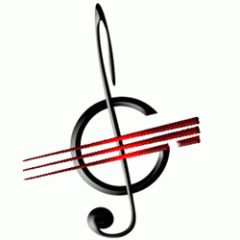Dave Brubeck, jazz pianist and composer died on the 5th of December 2012, just one day short of his 92nd birthday. With his loss we have had to say goodbye to the last remaining Jazz great from the Golden Age of Jazz.
Though much younger than such jazz icons as Louis Armstrong, Count Basie or Duke Ellington, Brubeck belonged to the generation of Jazz musicians who came to the fore in the 50s and 60s through Cool Jazz. Though he never played with Miles Davis (Davis was born in 1926, Brubeck in 1920), he was his contemporary, and this vanguard of artists were the ones who made jazz a popular art form in the late 50’s and 60′ – a period that can now regarded as the heyday of jazz, when Jazz musicians might be on the cover of magazines, spotted in St Tropez and sought after for interviews.
Dave Brubeck is most commonly associated with the music of his famous quartet, which featured Paul Desmond on Alto Sax, Joe Morello on drums and either Eugene Wright or Joe Benjamin on Bass. The line-up featuring Brubeck and Desmond was active from 1952 till 1968, and the so-called Classic Quartet mentioned earlier was together from 1958 – 1968.  The quartet wrote jazz history with the release of the classic album Time Out in 1959, which included the jazz hit Take Five (which was written in 5/4 time). Although Brubeck wrote almost all the compositions for the quartet, it is ironic that the tune they are most identified with, Take Five, was actually penned by Desmond. The album consisted of tunes in odd time signatures, and the label, Columbia, had to actually be talked into releasing the album, as they thought it was far too advanced for the listening public! The follow-up album, Time Further Out, also included the hit Unsquare Dance (in 7/4 time). Brubeck and Desmond were musically, on paper at least, an unlikely paring. Desmond, lyrical and soft, Brubeck rhythmic and, as his critics would point out, at time thunderous and heavy-handed. But opposites clearly attracted and this musical partnerhsip created some of the most wonderful music of the 20th century.
The quartet wrote jazz history with the release of the classic album Time Out in 1959, which included the jazz hit Take Five (which was written in 5/4 time). Although Brubeck wrote almost all the compositions for the quartet, it is ironic that the tune they are most identified with, Take Five, was actually penned by Desmond. The album consisted of tunes in odd time signatures, and the label, Columbia, had to actually be talked into releasing the album, as they thought it was far too advanced for the listening public! The follow-up album, Time Further Out, also included the hit Unsquare Dance (in 7/4 time). Brubeck and Desmond were musically, on paper at least, an unlikely paring. Desmond, lyrical and soft, Brubeck rhythmic and, as his critics would point out, at time thunderous and heavy-handed. But opposites clearly attracted and this musical partnerhsip created some of the most wonderful music of the 20th century.
When I started learning jazz, and started playing Brubeck’s pieces, I often struggled playing the left hand – I could not imagine how anyone could play such large intervals. Some years later I went to see Brubeck play (this was in the last 90s) in Frankfurt, and my Dad persuaded the security people to allow us backstage, and I could meet the great man. He was incredibly friendly and courteous, even though endless scores of people wanted to meet him. And I got to shake his hand, and suddenly the riddle of how he could play those patterns in the left hand was solved. Brubeck had the most enormous hands, and had he been English, he would have made a great slip fielder in cricket. He also signed my favourite cd of his quartet: Jazz Themes of Eurasia. My mother said that when she heard that Paul Desmond had died (aged 52 in 1977) she cried – I would have only been two years old, so cannot remember this. But I can recall feeling a similar shock when my piano playing heroes Kenny Kirkland and Esbjörn Svenson died before their time. When musicians are lost to the world far too early in their lifetime, there is a real sense of loss, of what could have been. With Dave Brubeck we can celebrate a lifetime of achievement, and salute and say farewell to the last remaining Jazz greats.
Thank you for all the great music, Dave.
Lincoln Jaeger
























